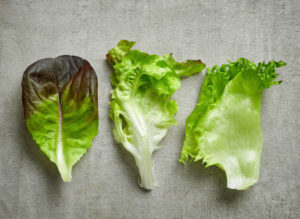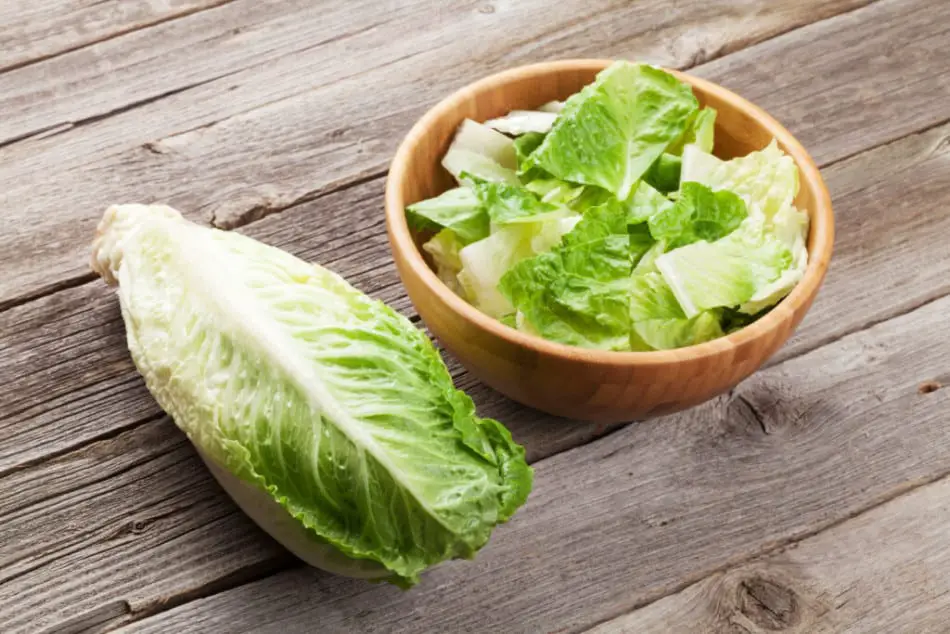
Lettuce has become part of our life, and almost everyone has enjoyed a salad at least once in their life. Lettuce is a good source of fiber, vitamin C, and other great nutrient-rich substances which make eating it much healthier for our bodies. When we picture lettuce growing on a farm, we think of soil and long lines of crops out in the field, and while this may be correct, lettuce has increasingly become grown in vertical farming systems.
To grow lettuce on a vertical farm, you will need to have a hydroponic tower or another way to house plants at different levels and give them access to water. It is also important to ensure that the lettuce has proper light, air circulation, and temperature, which is between 60 and 70 degrees Fahrenheit.
Growing crops in a vertical farm normally means using hydroponics, meaning you won’t need any soil or standard gardening equipment because you will be able to grow it quickly without much hard labor. Properly researching what you need will help as you begin, and knowing all you can about lettuce and its use in vertical farms will be increasingly helpful.
Methods of Growing Lettuce in Vertical Farm
There are three methods most commonly used in vertical farming, namely hydroponics, aquaponics, and aeroponics.
- Hydroponics is where you grow the crop with the use of sand or gravel and water, but without soil. To learn more, check out this article
- Aquaponics uses fish feces in water to give plant nutrients, using both water and fish as a substitute for nutrients normally found in soil.
- Aeroponics is when the plant roots are suspended in the air and mist is given to the plant as its nutrient.
The best way to grow lettuce is to use hydroponics, as it is more effective in vertical farming.
If you would like to grow some yourself, check out this complete at home kit, and start growing today! Don’t forget the seeds, or all you will have is some nutrient rich water. It’s probably good though…
Varieties of Lettuce Grown in Vertical Farms

There are so many different varieties of lettuce, some of which you may even be surprised to hear are lettuce. Within all of these varieties, there are some which will grow better in a hydroponics system than others. Each variety will have a slightly different taste and shape, as well as a different amount of time to grow. Here is a list of great lettuce options which can work well in a vertical farm using a hydroponics system.
- Classic Romaine Lettuce
- Arugula
- Gourmet Style Lettuce
- Looseleaf Lettuce
- Butterhead Lettuce
Each of the above types of Lettuce will grow well in your system, and can even be complemented with similar plants like Swiss chard, spinach, chives, or kale. Lettuce is the best-grown vegetable in hydroponics, followed by spinach, bell peppers, and herbs.
 Shop The Farmstand – Self-Watering, Self-Fertilizing Solution for an Easy to Grow Harvest
Shop The Farmstand – Self-Watering, Self-Fertilizing Solution for an Easy to Grow Harvest
Time of Growth and Yields of Vertically Grown Hydroponic Lettuce
Lettuce will grow almost anywhere; it is easily grown, produces fast, and gives great results year after year. It thrives in 6o to 70-degree weather and can mature as quickly as 30 days, but when you grow it with a hydroponics system, you’ll be able to grow even more lettuce.
“You can expect a 40% increase in lettuce yield with hydroponics over soil-grown lettuce”
The time it takes to grow lettuce will depend on the variety you choose. Some grow quickly, while others will grow a little slower. Romaine lettuce, or other similar varieties like butter crunch and bibb lettuce, will grow very quickly and can be ready in as soon as three weeks. Other lettuces, like iceberg, will take closer to 6 weeks, or even up to 8 weeks. That is still a pretty quick speed, and you’ll be harvesting them before you even know it. The other complimentary plants we suggested above like spinach and others normally grow in about a month.
Pest Control for Hydroponic Lettuce
Just as it is in outdoor farming, you still must learn to deal with insects and pests which come and try to eat and kill your lettuce. The most common of these are aphids. They get onto one thing, and then onto everything, and then take over, making it harder and harder for your plants to grow. The best way to get rid of them, as well as other insects like beetles and mites, are the organic options like Neem Oil (which comes from a tree and often smells bad), or diatomaceous earth, which is a finely powered rock. Both of these, as well as permethrin, Spinosad, or other insect sprays, are good to keep away the pests.
If the pests become a real problem, then more powerful oils or sprays may be needed. You should also cut off leaves that are heavily affected or discolored to prevent further contamination. It is important to use insect screens on all entries to your building. Disinfect all the pipes and other equipment you use to prevent water transmitted diseases. It may also be helpful to grab a few hanging traps to capture any bugs inside the enclosure.
Nutritional Superiority of Lettuce Grown in Vertical Farm
Lettuce grown in the soil is prone to a lot of outside factors that cannot be controlled, as a matter of fact, even some of those pests we discussed above will not be nearly as big of a threat as they would be if they were outside. Growing lettuce in a hydroponic environment means that it is in an enclosed area, therefore all sources of nutrients are controlled by you! That means that you can change the water, or the nutrients you put in the water to make it more nutrient-rich, or sweeter, larger or smaller. You have control, which means that it can be much better health, and more widely produced lettuce.
Vertical hydroponics also means that the lettuce can be grown almost anywhere since there are no outside factors and it doesn’t need too much space. This makes it possible to have the lettuce we buy in supermarkets be grown pretty close to where we actually live, meaning it doesn’t have to travel as long and can stay fresh so we can eat it and have access to all of its nutrients.
